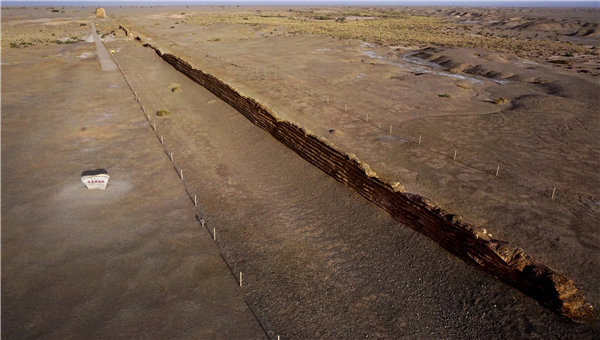

The Chu Great Wall is also the southernmost of the early Great Wall found so far and its unique geographical location and regional climate have led to distinctive architectural features.
"Archaeological discoveries have shown that at the base of the Chu Great Wall's man-made wall, there are large-scale accumulations of charred wooden sticks or charred wooden sticks mixed with stones. These charred sticks were man-made through firing and had drying properties that prevented dampness and moisture," Li says.
Other experts at the Beijing seminar shared studies of a large number of statues and architectural remains unearthed from Shaanxi that proved cultural exchange on both sides of the Great Wall during the Ming Dynasty, as well as those of relics of Tang Dynasty (618-907) frontier soldiers in Xinjiang, proving the Tang Dynasty's effective governance.
At the seminar, Song Xinchao, chair of the Chinese National Committee for the International Council on Monuments and Sites, called on related parties to further enhance the protection of the Great Wall, strengthen the exploration of its overall value, and further standardize archaeological operations.
"By streamlining the current work processes and taking the construction of the Great Wall National Cultural Park as an opportunity, we aim to comprehensively improve the level of protection and inheritance," Song says.
Tang Yuyang, a professor from the Beijing University of Civil Engineering and Architecture, emphasizes the evolution of Great Wall protection strategies, advocating for a shift toward research-driven restoration and proactive preventive measures, building upon the valuable practical experience garnered in Beijing.